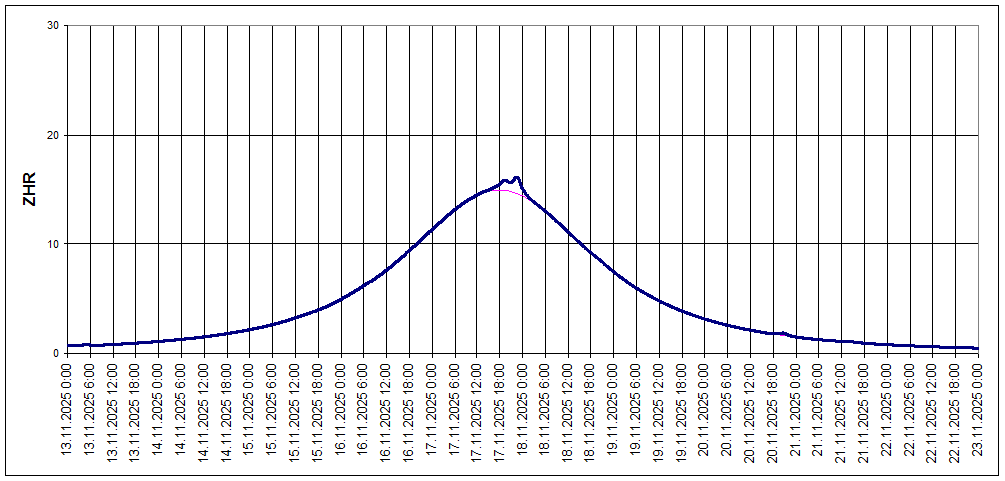Leonids 2025: prediction of activity
to the list of predictions

Fig. 1. Space-temporal projection of Leonids trails parts onto their minimal distance passages in 2025 (correspondence between colours of the particles and their ejection velocities can be seen here).

Fig. 2. Assumed profile of overall Leonid activity (blue line) and its background component (red line).
A number of encounters with 1699 trails is found for 2025. This trails is quite old but it encounters the Earth with its relatively regular parts:
| Trail | rD-rE, AU | Vej, m/s | fM(fMD) | Sol.log., deg. | Time, UT |
| 1699 | -0.00182 | -22.01 | 0.229 | 235.301 | 17.11.2025 18:27 |
| 1699 | -0.00174 | -21.92 | -0.359 | 235.301 | 17.11.2025 18:27 |
| 1699 | 0.00015 | -19.54 | 0.060 | 235.327 | 17.11.2025 19:05 |
| 1699 | 0.00020 | -19.42 | -0.165 | 235.334 | 17.11.2025 19:15 |
| 1699 | -0.00062 | -17.31 | -0.423 | 235.473 | 17.11.2025 22:33 |
References
1. "Comet's dust 2.0" program by S. Shanov and S. Dubrovsky. [Used for orbital computations.]
2. E. Lyytinen, T. van Flandern "Predicting the strength of Leonid outbursts", 2000, Earth, Moon, and Planets, P. 149-166.
3. Jenniskens P. Meteor showers and their parent comets, 2006, 780 p. 4. Kasuo Kinoshita, http://jcometobs.web.fc2.com/ [Orbital elements of the comet 55P Tempel-Tuttle]